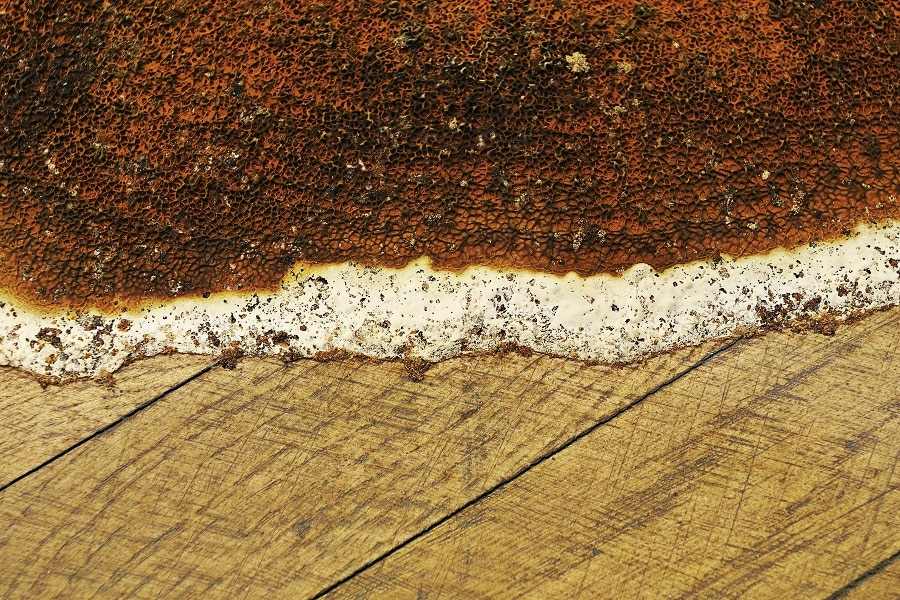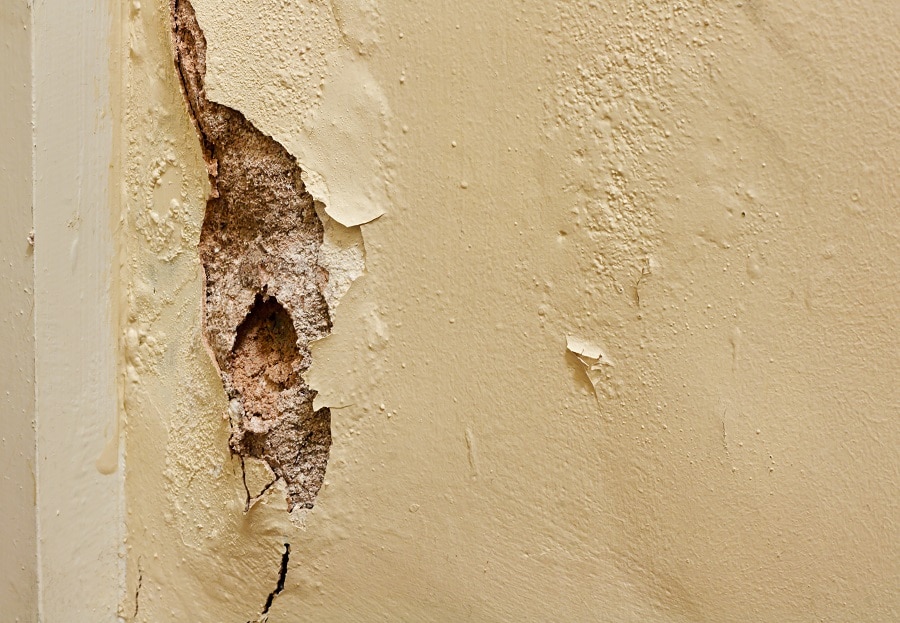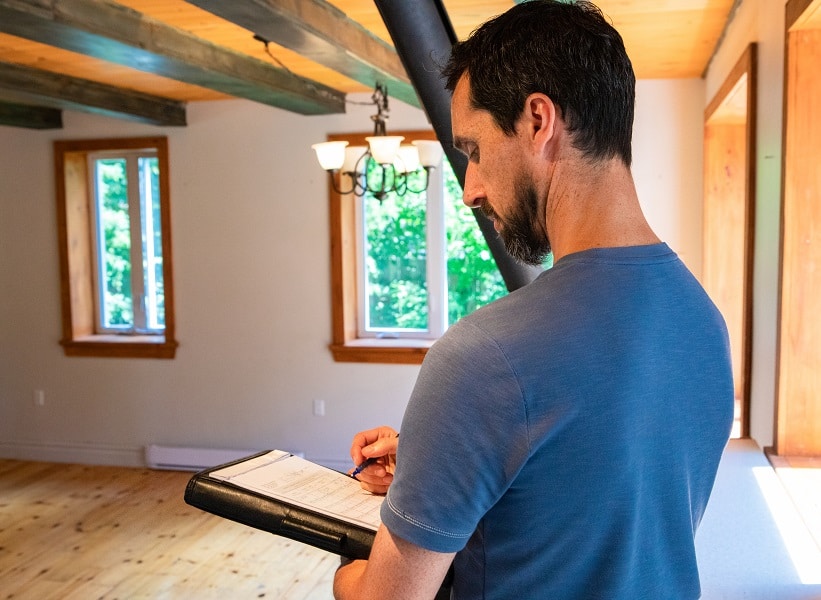What is dry rot?
Dry rot is a general term for Wood-decay fungus. Wood is broken down by Sporocarp (fungi), as the Mycelium consumes the wood, dry rot occurs resulting in fine dust particles, decomposition of the wood and dry rot bloom. Dry Rot fungal spores require a suitable place to land and start their colonies before spreading through the underlying wood. Soil can be contaminated when it is drilled into, and old wood that has been affected by dry rot could also be a source of contamination.
This ensures that even treated wood will be re-infected with dry rot if it is wet enough (i.e., below 15 percent relative humidity). While Dry Rot can be harder to spot, it is potentially more damaging than wet rot. It normally occurs where you are not looking. It could be under the plaster, under your floorboard, or in your loft. This is why it is important to know the signs and symptoms of dry rot and to have it handled fast.
Our Guarantee
- upto 30 year guarantee
- customer focused team
- 20 years combined experience
- portfolio of satified customers
- attention to detail
- Construction line accreditation
- public liability insurance
- CHAS accreditation
What is the difference between dry rot and wet rot?
Dry rot and wet rot are two different kinds of fungus that can destroy wood if left untreated. The biggest difference, however, is that wet rot needs significant moisture to spread. One of the main differences between wet rot and dry rot is that wet rot spreads much faster. This is so because Dry Rot fungus thrives even in eco-friendly woods like bamboo and uses the capillaries within the timber to grow. Dry rot is extremely destructive and spreads quickly through a house, even retaining its ruinous effects if the room has been previously treated for damp or wet rot. On the other hand, wet fungus occurs when timber becomes wet for long periods of time.
Call Our Sussex Damp Experts team now for quote, consultation and advice:
Call on 01273 257 765.
What are the causes of dry rot?
A lot of fungi species cause dry rot. In Arundel, the most common is Serpula Lacrymans. it can spread from your home’s walls to the floors, and even the plaster is not fixed soon enough. Structural issues with the timber will seriously compromise your houses structural integrity. Dry rot can develop if you don’t keep the amount of moisture in your timber balanced. The fungus will use the moisture and nutrients to grow and reproduce. The term “dry rot” is used to distinguish between “dry wood rot” and “wet wood.”
Wet wood survives on the dry rot. Those spores are dry, and those hyphae only need 20% dampness to grow into fungi while fungal spores require above 30% wet to generate hyphae. These cells can grow into a fungal body called a mycelium, which also spreads outward to find more wood in stone and brick. H2O, Hemicellulose and cellulose can be stripped from the timber by this fungus, leaving behind a fragile structure of the original wood. You need an expert to examine your property and determine whether your rotting timber is a result of dry rot or a different type of fungus. This is important as the remedies for these damages can vary based on the actual cause.

The dangers of dry rot in Arundel
Dry Rot Effect on your Property
The biggest problem with dry rot is that it will rapidly attack your home’s structural integrity. Dry Rot will slowly and silently break down the structural timber of your property. Extreme conditions may cause your home or appliances to fail. Dry rot does not strike your brick or stone, it just moves through it. Hence, regular checks are essential.
Dry Rot is a severe issue, which needs immediate maintenance and treatment. You should call a dry rot expert immediately to avoid further infestation and damage. If you think that you might have an issue with dry rot or dampness in your home, check out Sussex Damp Experts today.
Dry Rot Effect on Your personal health
It is not the fungus that causes dry rot that is harmful. Yet, if the conditions in the home allow dry rot to occur, these environmental conditions can be damaging to your health. This is especially precarious for the elderly, children and anyone with respiratory conditions such as asthma.
What are the Warning Signs of Dry Rot?
Discovering dry rot early is essential to preventing devastating and costly damage. If you see any of the signs and symptoms listed below, a full assessment is recommended.
-
The beginning of the dry rot cycle
Spores of dry rot are transported by the wind. If they are taken to the wood, they may begin to feast on it. When they feed on it, they will then germinate and create hyphae, if the timber is giving them enough nutrients to do so. As the fungus grows, strands of this tissue called hyphae form spiderweb-looking collections called mycelium. Mycelium is white or grey This mycelium can also reach into your properties bricks, mortar and wood to try and reach more of your timber.
-
Your timber is damaged.
If the wood is infected by dry rot, it can become flexible and dry. This may at times make your wood fall. You might notice rot in new wood darkening your wood color. Specifically, dry rot can cause something called cuboidal cracking. The pressure of water can cause timber boards to break up into shapes around 50 mm in width, a phenomenon called cuboidal cracking. This damaged timber will also often have hyphae, the white fungal growth. Hyphae can look like cobwebs and is a common symptom of dry rot.
-
Your timber will smell.
If you detect a distinct dour, you should have your timber checked for dry rot. Dry rot is often not noticed until it has damaged structural elements. Despite the odor, dry rot may not yet begun to grow.
-
Your timber will have fungus bodies on it.
Dry rot is the most noticeable kind of wood rot and one of the final stages of fungal attack. Mushroom-like fruiting bodies will begin to bind themselves to your wood. If it becomes dry, dry rot can no longer feed on the wood so it will pop out spores instead.
-
Your timber will have spore dust.
Spores related to dry rot do not just occur in timber affected by dry rot. However, if splotches of dust rusty color accompany dry rot spores, it can be a sign of dry rot. Fruiting bodies yield spore dust in the last phase of the dry rot cycle.
Dry Rot Treatment in Arundel

Only when the moisture is over 20% will a dry rot invasion take place. The first prevention step to eradicating the presence of the fungus is the monitoring of moisture levels in your property. Now you will be in control of the moisture levels. To treat dry rot, we recommend you commission a professional.
Sussex Damp Experts will help remove ant timber removal and other remedial works. Any affected timber should be handled by a professional. Similarly, a professional damp proofing expert will know the exact treatment required. Timber treatment can be into the timber, or on the surface of the timer. There are also several preventative treatment options available. Such chemicals require precise concentrations and can have adverse side effects if mistakenly inhaled or injected.
A professional can determine if your timber needs Boron rods. Boron is a radioactive compound, which is why our damp proofing experts all wear the protective clothing. Our damp proofing team will find and fix your leaks and resolve any dry rot damage. Dry rots can lead to serious complications if left untreated for a long time. If dry rot is not treated promptly, it can spread across your property and do real harm. Sussex Damp Experts provides quick solutions to fix problems associated with foundation and basement mold at affordable prices. Please don’t be late Call today 01273 257 765, for a free survey, and effective treatment of dry rot.
How can you prevent dry rot damage in Arundel?
The first step of treating dry rot is prevention. Most typically, a rot invasion occurs near an area that has a high amount of moisture and where the wood has enough space to dry and shrink. Here are some of the behaviors that would prohibit them from forming: Ensure that there are no leaks in your living space. Provide adequate, proper ventilation.
Well, ventilate and enclose the attic. Properly ventilate crawl spaces. Waterproof the exterior of your home by sealing the basement and crawlspace floors with our durable, waterproof sealers. Check all flickering walls and roofs to ensure that the water is adequately directed. Keep the sinks and downs clear. Using a wet system? Check for plumbing and heating leaks in your home. Owing to the humid conditions needed for dry rot fungus to be fed and germinated, the easiest way to reduce the possibility of dry rot is to decrease moisture levels. If you have a leak, plugging the leak can help reduce further damage to the house.
Speak to a Dry Rot specialist in Arundel
Our professional damp proofers and dry rot specialists are experts in the field and we provide both expert advice and effective solutions. We’ll do a full steam survey of the property and give you a free estimation before we start any work. Over the years, with their damp concerns, we have helped thousands of Arundel homeowners, and we will support you too. You can get in touch with us for a free consultation and quote on 01273 257 765. A qualified Plasterboard dry rot expert will diagnose your home to determine what the extent of the infestation is This allows us to give impartial recommendations and advice on the type of treatment you will need.

All of our surveyors are fully qualified and will be able to identify everything from Dry Rot to moisture ingress, including the solution, and give you a fair cost for any remedial works. Dry rot by its nature gets worse over time, if you think you have a problem, it is important to contact us right away. Email or call 01273 257 765, and Sussex Damp Experts services will be able to help you with your dry rot problem.
FAQ
Should dry rot be restored or replaced?
A certain level of dry rot can be repaired, but whether the damaged areas provide the house with structural stability, such as beams and joints, or even flooring, it is not recommended. Replace the wood in such a situation instead of repairing it. Whether you restore or rebuild the wood, it is better if you avoided the conditions that caused the rot to flourish in the first place or risked it coming back. Your roof leaks, broken gutters, or downspouts, plumbing leaks or insufficient ventilation should be inspected when considering a roof moisture accumulation You may consult a specialist to find and repair the problem.
Will you be able to treat my Dry Rot problem effectively?
With our expertly trained surveyors and specialists, a dry rot problem can be treated, rectified, and your timber can be protected for the future.
How do I discover how far Dry Rot has spread?
If you have traced the dry rot fungus quickly or not, a professional will identify the source of the problem. They will be able to trace the fungus in the different masonry and plaster from which it has spread.
How much can dry rot widen?
Dry rot spores can spread in anyplace with the right environmental settings. The reason is that they are carried in the atmosphere. If your timber has a moisture content of around 20%, and if it is in the open air, these conditions are attractive to dry rot fungus. This suggests that fungus groups can disperse to multiple materials. If dry rot is spreading across masonry and plaster, and if it reaches more timber to feed off where the timber is moist. It can widen further. Dry rot fungus needs five things to survive: the right temperature, drive rot spores, moisture, oxygen, and the food source. In any home in Brighton most of this is present.
Will dry rot stretch?
What should I do to control dry rot?
First identify the reason for your timber moist before solving it. A different treatment shall be given if the reason for your timber moisture is outside.
What are the effects of living dry rot unchecked?
Dry rot is the most insidious form of moisture that can infest property and cause permanent damage to the building if left untreated. Sometimes, once the harm is already done due to the places in which the problem is likely to be the presence of dry rot does not come to light.
Is dry rot stringent?
Dry rot can be particularly common in wooden properties, so it is essential that early signs of dry rot are identified before the damage becomes too severe.
How am I meant to know if I have dry rot?
A timber survey will assess how your timber is affected by being exposed to moisture. Later on, fruiting bodies and mycelium will be noticeable in the drive rot life-cycle.
Where can dry rot grow?
Dry rot attacks and rots timber that’s been in contact with water for a long period of time. Although it can often be mistaken for other problems in its early stages, it is important to seek advice. In every structure, both old and new, dry rot can grow. The reason being that it is caused by moisture and wetness that happen anyplace. Dry rot can be caused by leaks or weather, meaning the type of property does not affect it.




